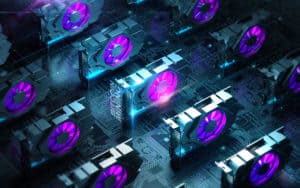There Are Some Big Misconceptions About GPU Crypto Mining, Says Leading Market Player
Credit to Author: Marco Streng| Date: Thu, 22 Aug 2019 13:34:19 +0000

GPU mining of cryptocurrencies remains popular, particularly among small-scale or at-home miners, but when it comes to large-scale operations, miners tend to favor purpose-built ASIC mining chips.
There has also been some contention in the crypto community in regards to GPU mining vs ASIC mining, with issues relating to decentralization, usefulness, and security.
However, a leading player in the crypto mining industry believes that there are various misconceptions when it comes to GPU mining and a need for more accurate information on the subject.
The following commentary is by Marco Streng, the CEO and co-founder of Genesis Group and Genesis Mining, one of the largest crypto mining companies in the world, on the misconceptions about GPU mining:
Where there is hype, there is bad information.
People around the world are understandably excited about mining their own cryptocurrency. I get the appeal as well as anyone — I got deep into this field shortly after Bitcoin’s emergence in 2009 and started mining for myself. Those early days eventually gave way to a career at Genesis Mining, the cloud mining company where I serve as head of mining operations today.
Crypto has only gained popularity and notoriety in the time since then, and our business has grown right along with it. These days Genesis is one of the biggest mining companies in the world, and we rent our computing power out to individuals who mine competitively for themselves.
Our users enjoy access to quite a bit more mining power than the at-home hobbyist, but this doesn’t mean small-time miners who operate their own hardware are hanging up their hats. The majority of these people lean on an everyday piece of computer hardware called GPUs, or graphics processing units, to mine their cryptocurrency. GPUs generally run the math that drives the millions of pixels appearing on a computer monitor, whether it’s displaying a tacky screensaver or a high-definition action movie.
By comparison to purpose-built ASIC mining chips, GPUs are plentiful, useful across multiple arenas, and are perfectly acceptable workhorses for crunching cryptographic math that yields financial rewards for miners. But it’s time to clear up some misconceptions about these beloved tools.
Misconception 1 – “GPU mining is more decentralized than ASIC mining.”
I would really have to disagree with that. Mining operations that live inside of big data centers are always going to win against home-based operations, whether they’re running ASIC or GPU setups. As the crypto ecosystem matured, these facilities have become its fundamental centers of gravity. Though Satoshi Nakamoto’s original vision was of decentralization, the state of crypto mining is trending toward centralization.
People running these large-scale mining businesses benefit greatly from economies of scale. They enjoy cheap electricity and bulk discounts on mining hardware.
Just because you’re mining a certain coin at home it doesn’t mean you’re contributing meaningfully to decentralization. A guy brewing beer in his bathtub can never compete price-wise with a large industrial beer brewery.
Misconception 2 – “GPU mining is more secure than ASIC mining.”
I don’t totally buy it. Yes, GPU mining is seen as a big community effort where everyone pitches in and contributes to an open-source ethos. But this makes it easy to denigrate ASIC chips as some kind of closed-source beast controlled by opaque companies that could include malicious backdoors in their hardware to steal your cryptocurrency. This hypothetical critique doesn’t really work.
Not only do most GPU miners use closed-source mining software, but the entire GPU market is controlled by just two companies: AMD and Nvidia. This pair holds a distinct duopoly over this category of computer chip, and are theoretically capable of exerting whatever influence on the market they wanted to. This means GPU miners and their open-source ethos are just as much at the mercy of big business as someone using ASIC miners.
Neither GPUs nor ASICs are completely bulletproof in terms of cybersecurity.
Misconception 3 – “GPU mining hardware is more multi-purpose ASIC hardware.”
This is true in the big picture — GPU chips are useful for mining as well as many other kinds of computation — but there’s a clear trend toward specializing some GPUs for use in mining specifically.
Nvidia sells high-end graphics cards like the GTX 1080, well-known to the gaming community. But it’s also begun released slimmed-down versions of this hardware that excel at mining specifically. These chips might be great for mining Litecoin, for example, but they’re not going to provide strong graphics for Doom Eternal. GPU manufacturers are specializing some of their hardware for use in crypto. This is exactly ASIC manufacturers have done from the beginning.
This reduces the overall cost of a GPU miner, but it compromises the chip’s usability for other projects. Rapid mining graphics cards by Nvidia might be good for mining Dogecoin, but they’re not going to work well at rendering video at an edit suite or powering research at an AI laboratory.
In any event, GPUs and ASICs alike are here to stay. Whether for crypto mining or other applications entirely, the developed world depends on these chips to power the kinds of technology that makes the world modern.
And as cryptocurrency continues to ramp up into the mainstream, we seem bound for a wholly new definition of “modern.” Here’s to meeting the modern age with good information on hand.
There Are Some Big Misconceptions About GPU Crypto Mining, Says Leading Market Player was originally found on Cryptocurrency News | Tech, Privacy, Bitcoin & Blockchain | Blokt.